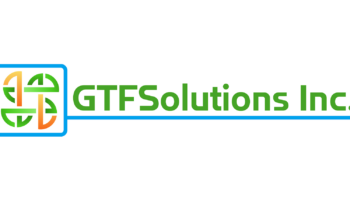The COVID-19 pandemic has forced the world to shift, which has created and demanded new opportunities and technological advances. The US tech market has remained the largest tech market in the world and represents 32% of the total market. This amounts to it being valued at approximately $1.7 trillion for 2020.
Some of these technological trends have been in development for years, while some have been the product of the pandemic. This article will explore the most robust tech trends affecting businesses in 2021.
- AI
Although Artificial Intelligence (AI) is not a new concept, it is still an important trend. AI is ever-changing as it is still in its developing stages, and is projected to grow into a $190 billion industry by 2025 while creating 9% of new US jobs. Already known for its dominance in image and speech recognition, navigation apps, smartphone personal assistants, and ride-sharing apps, AI has become the focus for almost 50% of startup applications. Recent trends show that AI is advancing to become part of household technology and many other products, services, and offerings.
According to MassChallenge, AI will drive the meaningful next wave of disruption similar to software. This advancement has offered business owners the opportunity to take advantage of the range of benefits. This has also offered the opportunity for entrepreneurs to improve on current technology and solve issues in development, programming, testing, support, and maintenance to compete with competitors. Some entrepreneurs may want to venture alone and form a sole proprietorship, while some may want to join forces and form a limited partnership. Entrepreneurs can use the information provided by Incorporation Rocket and click here to find out about business formation options.
- e-Commerce personalization
The result of successful e-Commerce personalization is customer satisfaction. A personalized customer experience allows an excellent shopping experience with the ability for business owners to connect with their customers more. According to figures produced by Deloitte, Evergage, and BCG, have given marketers the realization that businesses that do not offer personalization will lose revenue and loyalty. For businesses to thrive, they need a supportive client base. By showing clients that the business cares about them, they would be able to achieve this.
- VR & AR
Virtual Reality (VR) and Augmented Reality (AR) operate where VR immerses the user in a specific environment while AR enhances it. Globally, the VR and AR market is expected to be worth $209.2 billion by 2022. This growth would only offer more opportunities to businesses in tech fields. This technology, which has been dominating the gaming industry, has started being used for training purposes. VirtualShip, which is a simulation software used to train U.S. Navy, Army and Coast Guard ship captains, have used VR and AR. This trend is expected to be integrated into more than just gaming and training, eventually affecting general life. VR and AR has the potential to be incorporated in entertainment, education, marketing, and even injury rehabilitation.
- 5G integration
The need for higher-speed internet and well-connected homes has been the driving force behind the advancement of 5G, regardless of the conspiracies around it and its ‘connections’ to COVID-19. 5G is expected to be used in factories, HD cameras that help improve safety and traffic management, smart grid control and smart retail. Companies across the globe have already started integrating 5G to reap its benefits. Companies like Verizon have announced the expansion of their 5G network in late 2021 and Ericsson, in China, has been rapidly deploying 5G. The expansion of 5G has been an opportunity for businesses to use it within their services. A startup called Movandi has been focused to help 5G transfer data at larger distances. A startup named Nido Robotics uses 5G networks to assist drones to successfully navigate and explore the seafloor.
- RPA
Robotic Process Automation (RPA) is the use of software to automate business processes. Examples of these processes are the interpretation of applications, processing transactions, and data handling. The use of RPA uses automation to take care of repetitive tasks that people have had to do. But the use of RPA may be a double-edged sword. The use of RPA has been questioned, seeing that Forrester Research has estimated that the use of RPA would threaten the jobs of 230 million people, which is roughly 9% of the global workforce. But McKinsey has found that less than 5% of jobs are able to be fully automated. But despite the fact that it may threaten jobs, it also offers opportunities for new jobs. Examples of these new jobs would-be developers, project managers, business analysts, solution architects, and consultants.
The Takeaway
The mentioned tech trends have dominated 2021 and are continuing to do so. For many businesses, the use of AI, e-Commerce personalization, VR and AR, 5G or RPA offers a huge opportunity to launch themselves into success. For business owners to successfully integrate these trends and reap their benefits, they need to stay updated on the latest developments and need to educate themselves on the processes of integration.



